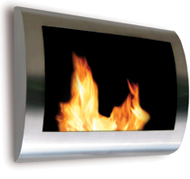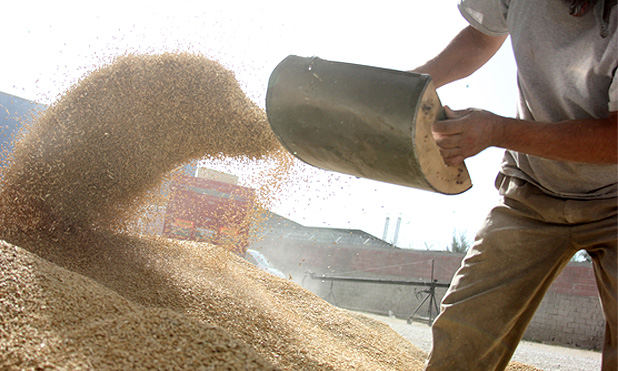
Maintaining Your Wood-Heating System
March 2018Maintaining your wood-burning system ranges from simple, frequent tasks such as removing and disposing of ashes to more complicated jobs such as replacing parts that have worn from usage and heat stress.
Regular upkeep also helps the system operate efficiently and safely, since one of the most important maintenance tasks is removing combustible deposits from the flue pipe and chimney.
Wood-burning systems operate under a variety of conditions during each heating season, which creates the need for many maintenance tasks. In the spring and fall, heat demand is relatively low. So slow burning may cause creosote to build up in the flue pipe and chimney more rapidly. This is a common problem with conventional wood-burning stoves that can’t burn at low heat outputs without smouldering.
During the colder months, wood-burning systems operate closer to their maximum heat output for long periods, creating stress on internal components. Many modern wood heaters have internal components, including baffles and catalytic combustors that wear out from exposure to high temperatures. Replace these components when necessary.
One of the best ways to ensure that your wood-heating system is safe, clean and effective is to hire a trained, insured and certified chimney sweep to conduct a thorough maintenance check each year. Professional chimney sweeps will clean the entire system and report any problems. They might suggest that it is time to replace the flue pipes, baffles, catalytic combustor (if you have one) or door gaskets and may even be able to do the work for you when the time comes. Your wood-heating retailer may also offer sweeping and maintenance services.
Summer is a good time to schedule maintenance, before you light the first autumn fire. It can also be done in the spring, following the winter wood- heating season.
Important Maintenance Tasks
Here are the most important maintenance tasks to consider as you look over your wood- heating system.
Clean and Inspect the Chimney and Flue Pipes
Check the chimney and flue pipes regularly until you determine the rate of creosote buildup. Chimney fires usually occur because users don’t know how quickly the deposits develop and neglect to clean them. Check often and clean off the creosote when it is visible and clinging to the liner surface. Dry, flaky deposits are less dangerous than black, shiny creosote. Older or smouldering systems may need cleaning as often as every three weeks.
During a maintenance inspection, check the chimney and flue pipes for signs of deterioration. Check the flue pipes for corrosion that can weaken the joints. Look for corrosion or rust stains on the outer shell of a metal chimney, and check for bulges or corrosion in its inner liner.
When inspecting a masonry chimney, look for black or white stains on the outer bricks and cracks. Look for missing pieces in the chimney liner as well. Locate the clean-out door for the chimney it is usually in the basement, below the point where the flue pipe enters the chimney (however, in some installations, it is outside the house). Open the clean-out door at the base of the chimney and check for tile fragments and liquid stains. Remove any deposits. Make sure the door is tightly sealed afterwards.
Check the condition of the chimney in hidden spaces including the attic, wall and chimney chase areas where corrosion and other deterioration can occur. Do the most thorough cleaning and inspection of the system in the spring, just after the heating season is over. Any deposits left in the system, combined with warm, humid summer air, may corrode the steel parts. Cleaning and inspecting the system in the spring also gives you time to order replacement parts and do any repairs before the heating season begins in the fall. If you see any problems during your cleaning and inspection and aren’t sure how to handle them, have a qualified technician inspect and repair the system before you use it again.
Adjust Door Tension
Many modern wood heaters have adjustment screws on their loading doors. They are designed to keep tension on the door gasket to prevent smoke leakage. These adjustments are usually simple and keep the heater working. Adjust the door, for example, when you see a haze of soot on part of the door glass. You will be able to tell where the leak is from the shape of these streaks of haze.
Replace Door Gaskets and Other Seals
Appliance designers use gaskets to prevent unwanted air from entering the firebox. Leaky gaskets reduce efficiency and may disable the combustion system of an advanced wood burner. Gaskets are located around the loading door, the glass panel and most ash-pan openings. You may need to replace some gaskets as often as once a year; others may be fine after several years of use. Check all gaskets at least once a year during a thorough maintenance inspection and occasionally during the heating season.
Check and Replace Catalytic Combustors
If you have a catalytic stove, you can test the catalytic element’s function by watching the smoke as it exits the chimney top. With a well-established fire burning, open the bypass damper and observe the top of the chimney you will likely see some smoke. Then close the bypass damper, wait 10 minutes and check the chimney top again. If you still see smoke, remove the catalytic element and check it.
Examine the catalytic combustor and its mount during your maintenance checks. The combustor is fragile, so use a clean, soft paintbrush to remove ash dust. You may see cracks in the honeycomb of the catalyst, but they will not necessarily affect operation. If pieces are missing, replace the catalyst. A leaking bypass damper seal can dramatically increase emissions from a catalytic stove. Therefore, make sure you check the bypass gasket.
The catalyst in a high-efficiency wood stove is certified by the EPA or CSA B415.1 and is usually guaranteed for up to six years. Under heavy use, however, it may last only one to two years. If in doubt about when to replace these parts, ask your hearth products retailer.
Examine Baffle Plates
Components inside the combustion area of advanced wood-burning stoves and fireplaces are exposed to extremely high temperatures and may deteriorate with use. Internal baffles may last as long as 10 years or as little as two, depending on the design and on how you use the appliance.
Internal air channels and tubes may become disconnected or even fall into the firebox. Correct any such change to your stove immediately because performance will suffer and other internal components will likely be damaged.
Maintain Door Glass
The glass door in a modern wood-burner isn’t glass at all, but a transparent ceramic material that can withstand very high temperatures. It is unlikely that the “glass” will break because of heat, but it could be damaged if struck with a hard object. If you need replacement glass, visit the store where you bought your stove or fireplace to get the right size, shape and material.
The door glass will need cleaning periodically wait until the appliance has cooled before cleaning. A damp cloth or paper towel should remove any ash dust or light brown stains. For darker, more stubborn stains, buy special stove glass cleaner that will not scratch the surface. Check the special gasket around the glass and replace it when it gets worn or leaky.
Many of the new, high-efficiency stoves feature a forced-air mechanism that helps to keep the door glass clean.
Source: Canren.gc.ca



























